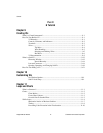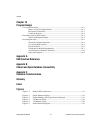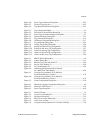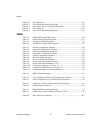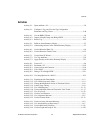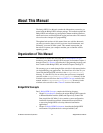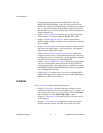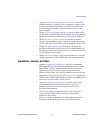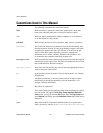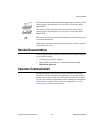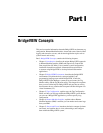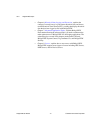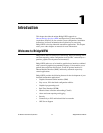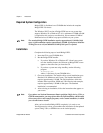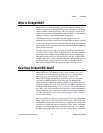
About This Manual
© National Instruments Corporation xxi BridgeVIEW User Manual
• Chapter 12, Case and Sequence Structures and the Formula Node,
introduces the basic concepts of Case and Sequence structures, and
provides activities that explain how to use the Case structure, how
to use the Sequence structure, and what sequence locals are and
how to use them.
• Chapter 13, Front Panel Object Attributes, describes objects called
attribute nodes, which are special block diagram nodes that control the
appearance and functional characteristics of controls and indicators.
• Chapter 14, Arrays, Clusters, and Graphs, introduces the basic
concepts of polymorphism, arrays, clusters, and graphs and provides
activities that explain auto-indexing and the Graph and Analysis VIs.
• Chapter 15, Application Control, introduces the VI Server and
provides an activity that explains how to use it within BridgeVIEW.
The VI Server allows you to control when a VI is loaded into memory,
run, and unloaded from memory.
• Chapter 16, Program Design, suggests some techniques to use when
creating programs and offers programming style recommendations.
Appendices, Glossary, and Index
• Appendix A, HMI Function Reference, describes error handling
for BridgeVIEW VIs and contains an explanation of the VIs in the
BridgeVIEW VI library. In this appendix, the VIs are arranged
alphabetically, first by VI Library name (Alarms and Events,
Historical Data, System, Tags, and Tag Attributes), then by VI name.
• Appendix B, Citadel and Open Database Connectivity, describes the
Citadel database and the Open Database Connectivity (ODBC) driver,
and includes several examples of how to use it.
• Appendix C, Customer Communication, contains forms to help
you gather the information necessary to help us solve your
technical problems, and a form you can use to comment on
the product documentation.
• The Glossary contains an alphabetical list of terms used in this
manual, including abbreviations, acronyms, metric prefixes,
mnemonics, and symbols.
• The Index contains an alphabetical list of key terms and topics in
this manual, including the page where you can find each one.



